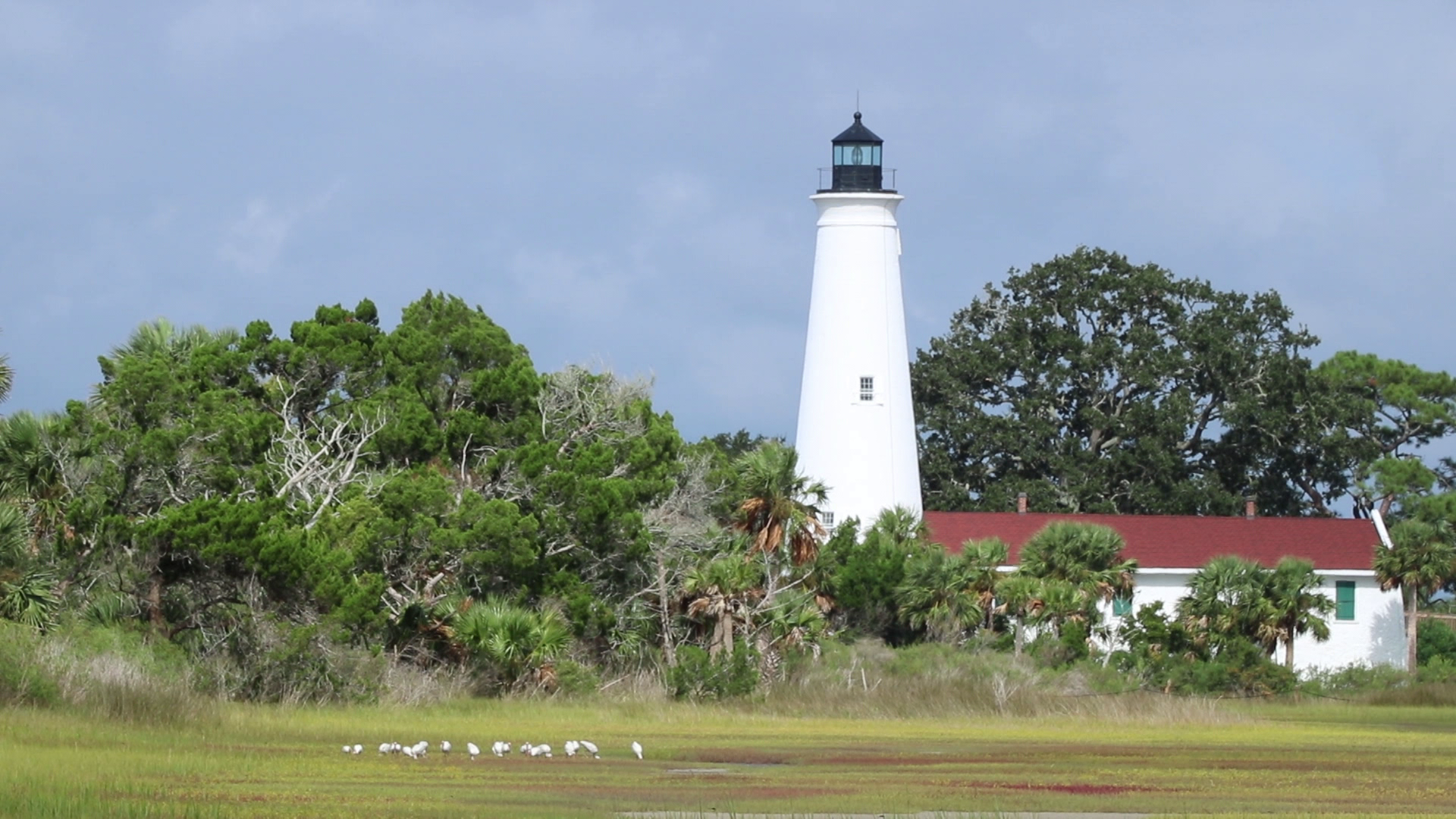

WFSU Ecology Producer Rob Diaz de Villegas catches the sunrise with Don Morrow, a man who spends many mornings counting the shorebirds along the Gulf of Mexico.
Originally Posted December 17, 2020
It’s a little after 6:00 am, and all I can see in my headlights is tall grass. In that tall grass is the car I’m following; off to the sides is darkness, water. My car struggles to stay straight on the overgrown levies of the Saint Marks Refuge, and my hands stay busy on the wheel. Soon, Don Morrow and I are standing in the dark hearing least bitterns and frogs, and a distant barred owl. We’re in position to count shorebirds.
Don does this roughly twice a month, based on the tides. “I’m looking for a 2.5 foot tide, at least, at the mouth of the St. Marks River,” He explains. High tide today, September 11, 2020, is at about 7:50 am. The high water on the coast will drive shorebirds to the Refuge’s interior ponds, where they’re easier to count. It’s a few weeks into winter migration, and Don is seeing more and more birds with every survey.
But the value of his data isn’t strictly in the season to season numbers, it’s in the year to year. A study published last year found that North America has about three billion fewer birds than in 1970, and that shorebirds have declined by about a third. While the Refuge offers prime coastal habitat, many of its winter migrants breed in the ever warming Arctic. Habitat loss elsewhere could affect numbers here.


Rob Diaz de Villegas is a senior producer for television at WFSU Public Media, covering outdoors and ecology. After years of producing the music program OutLoud, Rob found himself in a salt marsh with a camera, and found a new professional calling as well. That project, the National Science Foundation funded "In the Grass, On the Reef," spawned the award-winning WFSU Ecology Blog. Now in its tenth year, the Ecology Blog recently wrapped its most ambitious endeavor, the EcoCitizen Project.
Rob is married with two young sons, who make a pretty fantastic adventure squad.





